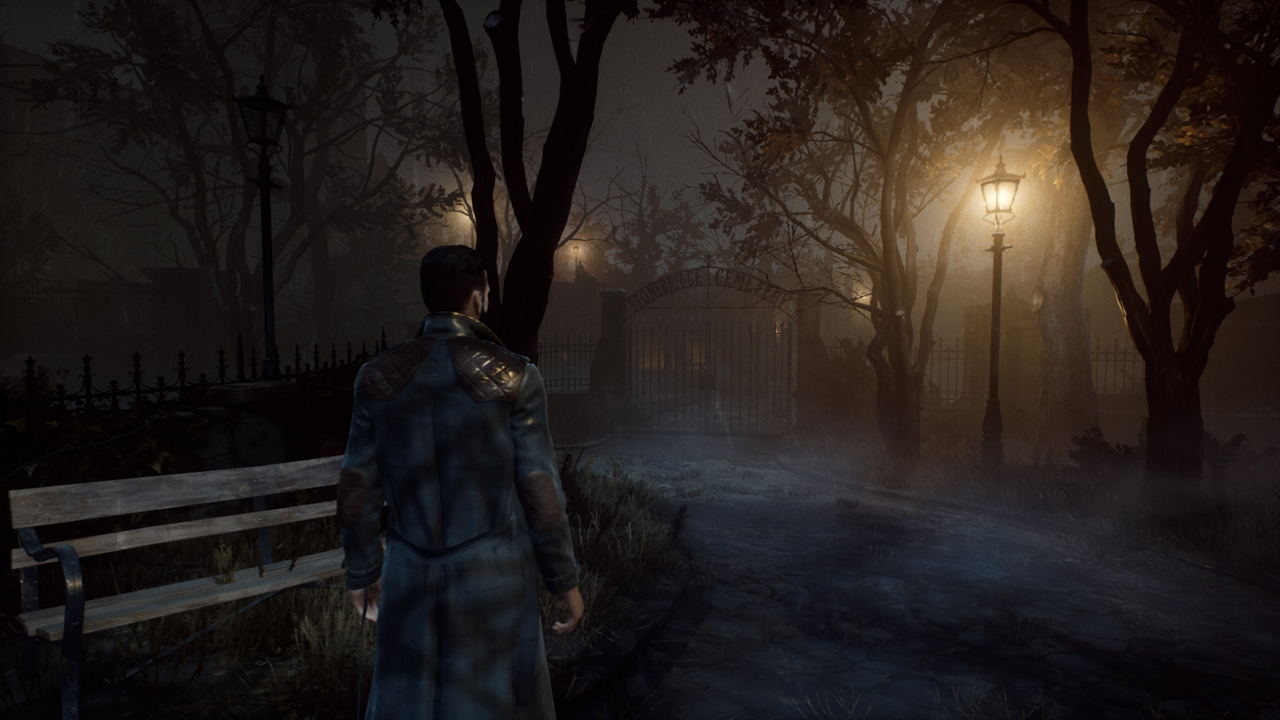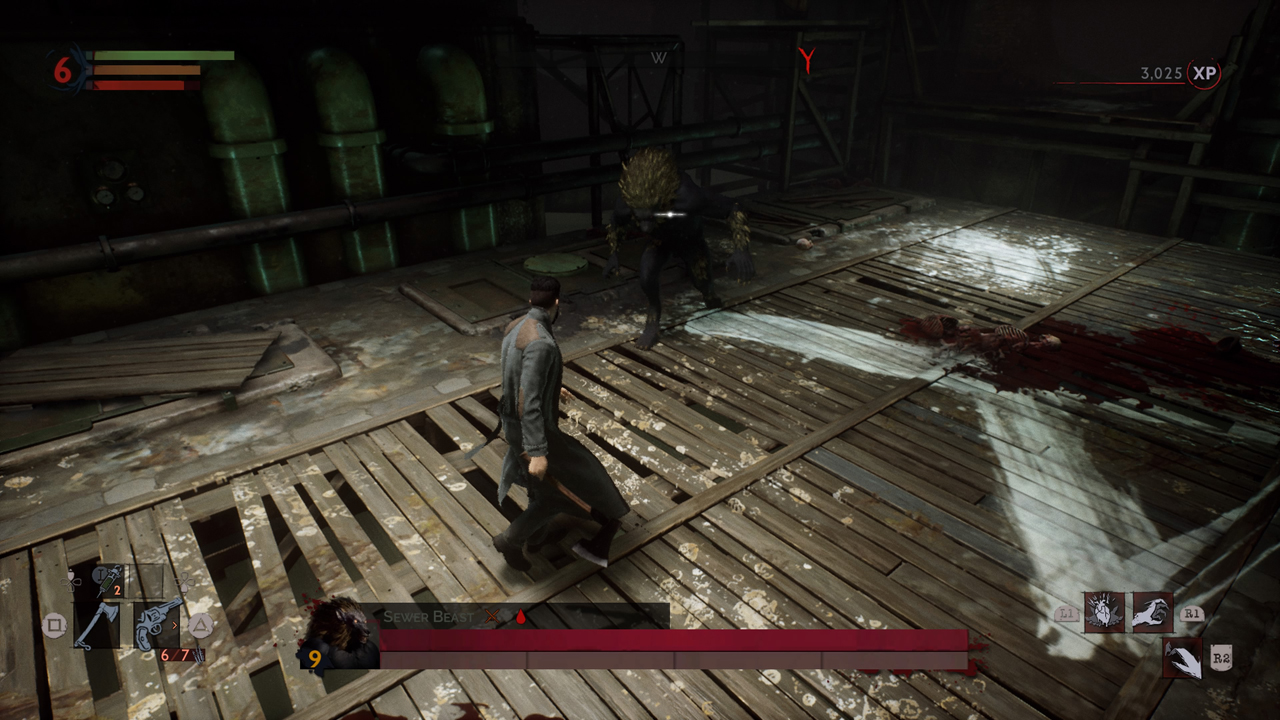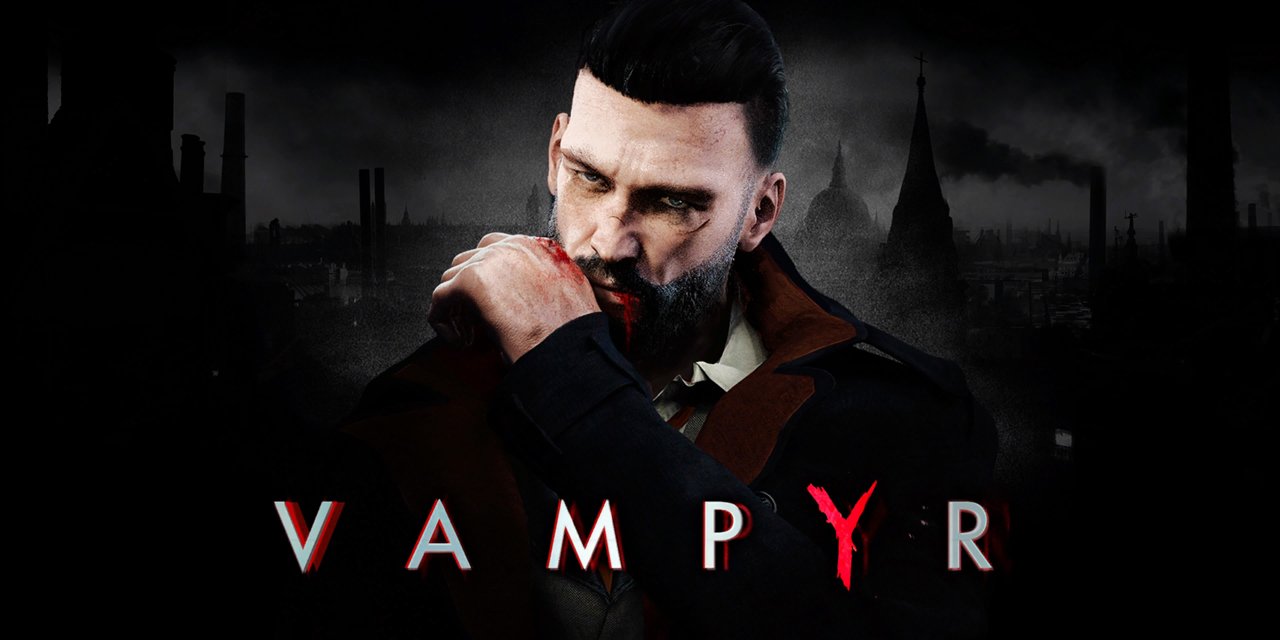“Permit me to introduce myself…”
Initially unveiled at E3 2015, last week’s release of Vampyr marks the end of a 4-year development cycle from Life is Strange developer Dontnod Entertainment, ditching the modern-confines of the Pacific Northwest, for the gloomy and decaying streets of Post-Edwardian 1918 London. Sticking to its literary source material in perfect tandem, Vampyr absolutely nails the gothic atmosphere found in early vampire fiction, presenting a unique and enthralling RPG that is heavily steeped in the original lore of the mythical creatures. The game released worldwide on 5th June 2018, and as usual I’ll be covering the PlayStation 4 version of the game, detailing the pros and cons, ultimately concluding it’s worth at the £49.99 asking price.
If there’s one area of horror that has always held a special place in my heart, it’s vampires without a doubt. While the textbook definition of the vampire has remained largely the same over the years, the original nature of the creature has been somewhat skewered, thanks in no small part to complete shite like the Twilight Saga or The CW’s The Vampire Diaries, which moved the creature from its gothic horror roots, and more into the genre of teenage romance films (vampires sparkling in the sun, really?!?). Regardless of the modern day interpretation, the vampire has dominated cinema for over one hundred years, giving us many different variations of the immortal bloodsuckers. From the tragic tale told in Interview with the Vampire (1994) to the horror-comedy cult classics The Fearless Vampire Killers (1967) and The Lost Boys (1987) vampires have been displayed in a myriad of different ways; however almost all of them pale in comparison to the suave and charismatic monster that was featured in Bram Stoker’s quintessential novel: Dracula (1897) that enshrined the modern vampire today as we know it, going on to be a dominant figure within horror, crossing numerous fields of entertainment.
Modern criticisms aside, the original aesthetic vision found in the 1897 novel was perfectly translated to the silver screen in Francis Ford Coppola’s Bram Stoker’s Dracula (1992) in which actor: Gary Oldman played the titular vampire to perfection. The early 20th Century setting, the gothic architecture of Victorian London, the dim lighting over gloomy cobblestone streets, the period outfits and authentic mannerisms all came together to give the movie an atmosphere all its own, that would go on to be the definitive backdrop for a vampire story to be featured within. The guys over at Dontnod Entertainment understood this backdrop perfectly, as their most recent release: Vampyr mirrors Stoker’s aesthetic vision perfectly. Vampyr is a third-person open world RPG set in 1918 London, amidst the Spanish Flu epidemic that claimed millions of lives at its peak. Vampyr places you in the shoes of Dr Jonathan Reid, a blood transfusion specialist and former combat medic returning from the western front in France to visit his family, only to have his visit cut short by being turned into an Ekon (one of the many races of vampires in Vampyr). Upon awakening in a mass grave of influenza ridden corpses, Reid is hunted down like an animal by the Guard of Priwen (the game’s merry band of vampire hunters) only to discover the nature of his condition not long after. This leads Reid down a bloody path of revenge against the creature that turned him, while simultaneously fighting off the urge to spill innocent blood to sate his bloodlust and adhering to the Hippocratic Oath by trying to find a cure for the epidemic.

The vulgar fictions of a demented Irishman: Vampyr mirrors the aesthetics of Bram Stoker’s 1897 novel: Dracula in perfect tandem, acting almost as a homage to the novel itself.
Much like Bram Stoker’s Dracula, Vampyr doesn’t pull any punches when it comes to a narrative that is overly dark in tone, creating a world full of horror and despair, making the streets of 1918 London generally a pretty unpleasant place to be. The game’s story follows Dr Jonathan Reid on a quest for both revenge and discovery; learning about his new-found condition as he attempts to establish a connection between the vampire population and the epidemic itself, with plenty of unexpected plot twists, tragic moments and difficult decisions along the way (this is an RPG after all). Another interesting narrative device is that Reid is affected by the traditional vampire rules that surround the mythical creatures; an uncontrollable hunger, aversion to religious icons and consecrated ground, needing an invitation to enter someone’s house as well as standing in direct sunlight sauté-ing the good doctor quicker than a express train to hell; all of these ‘nods’ (if you will) make Vampyr a faithful adaptation of its source material, and raise the immersion tenfold with the way it’s integrated so perfectly into the gameplay (no one in their right mind likes garlic anyway).
While the main narrative in Vampyr is by far one of its strongest selling points, a lot of the game’s more memorable moments come from the stories surrounding the NPC’s themselves, who all have their own unique personalities and roles within the game’s 4 distinct neighbourhoods, making up the east and west end of London. Vampyr works primarily off a citizen menu, in which 60 distinct NPC’s make up the population of the capital’s 4 boroughs, with one individual acting as the pillar of the community. Some of the best moments I had within the 20 odd hours I spent with Vampyr were trying to understand the motivations behind the games NPC’s; one in particular was a particularly stoic ‘fire and brimstone’ preacher based in Whitechapel, who seemed nothing more than a harmless priest at first glance, but was found to be a cold-blooded murderer (after some degree of investigation) using fire as a holy weapon to ‘cleanse’ anyone who didn’t adhere to his strict code of ethics (which made it all the more sweeter when I raised my mesmerise level high enough to kill him). While you genuinely care for the well-being of some of the game’s citizens, you are a vampire, and you need to feed if you want to grow in strength; this is interpreted in game as Blood XP, with certain citizens giving you a massive XP boost to level up with should you ’embrace’ them. Of course Vampyr is also an RPG, and the choice to play the entire game without feeding on anybody is definitely a viable option should you so choose (you can even feed on rats like good ol’ Louis himself). For myself, I decided to play how Lestat de Lioncourt (the titular badass from Anne Rice’s Vampire Chronicles) would, feeding only on murderers, rapists and criminals actually benefitting the communities of the nation’s capital rather than being a detriment; when you do kill someone however you are haunted by their last thoughts as they slip away, which makes you genuinely feel like a complete asshole at times (quite possibly the first video game to evoke that sort of reaction from me). Overall the writing in Vampyr is nothing short of superb, offering a sombre and tragic tale of a tortured individual seeking redemption (Dr Jonathan Reid is the textbook definition of a tortured anti-hero done right) while simultaneously boasting some of the best written NPC’s I’ve seen in a video game to boot (the last time I felt so invested in a game’s characters was The Witcher 3: Wild Hunt).

Pardon me, but your teeth are in my neck: Feeding on NPC’s in Vampyr will make you more powerful, but those choices don’t come without consequence.
While the narrative side of things in Vampyr are excellent, there are a number of aspects within the gameplay that dampen the experience somewhat. First and foremost the game lacks any real graphical flair, with the title running at 30fps and 1080p across all console formats, meaning you won’t be getting any 4k or HDR enhancements if you’ve made the jump to the PS4 Pro / Xbox One X. In addition to this (and while the game’s NPC’s are very well written), the distinct lack of facial emotions sometimes makes the conversation feel like you’re talking to a robot fresh off the assembly line, rather than a human being that has experienced genuine suffering. While the lack of extra polish is a bit disappointing (especially at the ‘AAA’ price of £49.99) it doesn’t take away from the experience too much, and will obviously be a non-issue for those using the bog-standard PS4 / Xbox One.
In terms of gameplay issues (and while it isn’t completely terrible), the combat system definitely needs some work, acting as a low-budget version of the system found in the Dark Souls series, generally acting as little more than mashing the square button until your foe dies. Mixing up weapon types definitely adds some flavour to the mix, and the vampire abilities that you unlock after levelling up add some well-needed variety to the combat (boiling an opponent’s blood in his veins and watching them explode into a bloody paste never gets old) but ultimately it’s nothing to write home about, and can sometimes be more interesting to go invisible and completely sneak past your enemies. Aside from the pretty bland combat system, the game does also give you the ability to heal people, adhering to Reid’s Hippocratic Oath as a doctor. This is made possible through the game’s simple (yet effective) crafting system, allowing you to craft tonics and home remedies to heal the ailments of London’s citizens (making their blood all the juicier should you decide to have them for lunch). While the crafting system is pretty basic (collect x amount of ingredients then press the X button at a crafting table) Vampyr wears it proudly like a badge of honour (it is an indie game after all) and it’s safe to say that healing your favourite NPC’s gives you a warm feeling inside like you’ve done your good deed for the day, making up for all the gratuitous slaughter you’ve previously got caught up in (although less so when you’ve cured the same old woman of Sepsis for the umpteenth time).

Mash square, loot, repeat: Vampyr’s lacklustre combat system won’t be winning any award for gameplay innovation anytime soon.
Despite its minor shortcomings, Vampyr has an incredibly strong bite (pun intended) in the narrative department, telling the tragic tale of a tortured soul who tries his best to heal mankind while trying not to fall to into darkness; and while the combat system isn’t anything special, it’s definitely not so bad that to the point that it hinders gameplay in any real way, as the citizen mechanics more than make up for the lack of finesse or polish. Overall Vampyr is one hell of an RPG (narrative-wise) and an even more fun vampire game, making the benefit of complete creative freedom a clear & definitive boon in favour of indie developers to the more rigid structures imposed by ‘AAA’ studios.
A review code was provided by Focus Home Interactive.



























